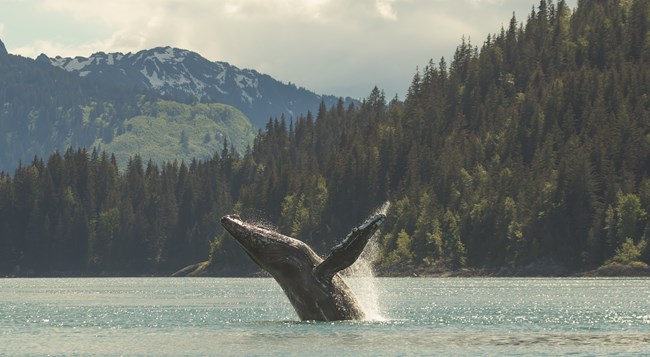|
Many laws help protect at-risk species including the Endangered Species Act, Migratory Bird Treaty Act, Bald and Golden Eagle Protection Act, and Marine Mammal Protection Act. Some of these protect specific species, while others are focused on protecting habitat, too. In addition, states protect wildlife under their own endangered species or species of concern conservation laws. International treaties like the Convention on the International Trade in Endangered Species of Wild Fauna and Flora contain provisions for the protection of wildlife, including endangered species. Endangered Species ActWhen Congress passed the Endangered Species Act (ESA) in 1973, it recognized that our rich natural heritage is of "esthetic, ecological, educational, recreational, and scientific value to our Nation and its people." It further expressed concern that many of our nation's native plants and animals were in danger of becoming extinct.

Explore listed animals
Find out which animals are listed under the ESA. 
Explore listed plants
Find out which plants are listed under the ESA. All species of plants and animals, except pest insects, are eligible for listing as endangered or threatened. For the purposes of the ESA, Congress defined species to include subspecies, varieties, and, for vertebrates, distinct population segments. The ESA also makes government agencies responsible for protecting critical habitat of listed species. Critical habitats are specific areas that are:
Watch this videoEndangered Species Act 101Frequently Asked Questions About the ESAAll federal agencies have responsibilities under the ESA, but the U.S. Fish and Wildlife Service (Department of the Interior) and the National Oceanic and Atmospheric Administration Fisheries (Department of Commerce) are the agencies that administer the Endangered Species Act. These agencies:
The National Park Service works with these agencies to conduct appropriate conservation and restoration activities and minimize negative impacts to at-risk species in parks. A species is added to the list of Endangered and Threatened species when it is determined to be at-risk due to any of the following factors:

NPS Photo Migratory Bird Treaty ActPassed in 1918, the Migratory Bird Treaty Act (MBTA) is one of the oldest pieces of environmental legislation in the country. The act came at a time when North American birds were in drastic decline due to overhunting and unregulated commercial trade in bird feathers, often for the use in ladies' hats. Thankfully, fashion trends come and go, but the act holds strong today with its intended purpose, making it unlawful to kill, hunt, sell, or possess most native species of birds without a permit. The MBTA originally protected 1,026 native bird species. A 2020 revision of the list of migratory birds protected under the MBTA added 75 species and removed 8 species bringing the total number of protected species up to 1,093.

Carey Chisholm Bald and Golden Eagle Protection ActToday, eagle populations in the United States are thriving and eagles have since been delisted under the Endangered Species Act. However, eagles are still protected under the Bald and Golden Eagle Protection Act. 
© Sean Neilson 2014 Marine Mammal Protection ActIn 1972 Congress passed the Marine Mammal Protection Act (MMPA) in response to significant declines in some species of marine mammals due to human activity. The MMPA established a national policy to prevent marine mammal species and population stocks from declining beyond the point where they ceased to be significant functioning elements of the ecosystems of which they are a part. This piece of legislation shifted the focus of marine resource management to an ecosystem-based approach. Under the MMPA all marine mammals are protected. The MMPA is administered by NOAA Fisheries (whales, dolphins, porpoises, seals, and sea lions), the U.S. Fish and Wildlife Service (walrus, manatees, sea otters, and polar bears), and the Marine Mammal Commission. Learn more about the Marine Mammal Protection Act. |
Last updated: January 20, 2022
